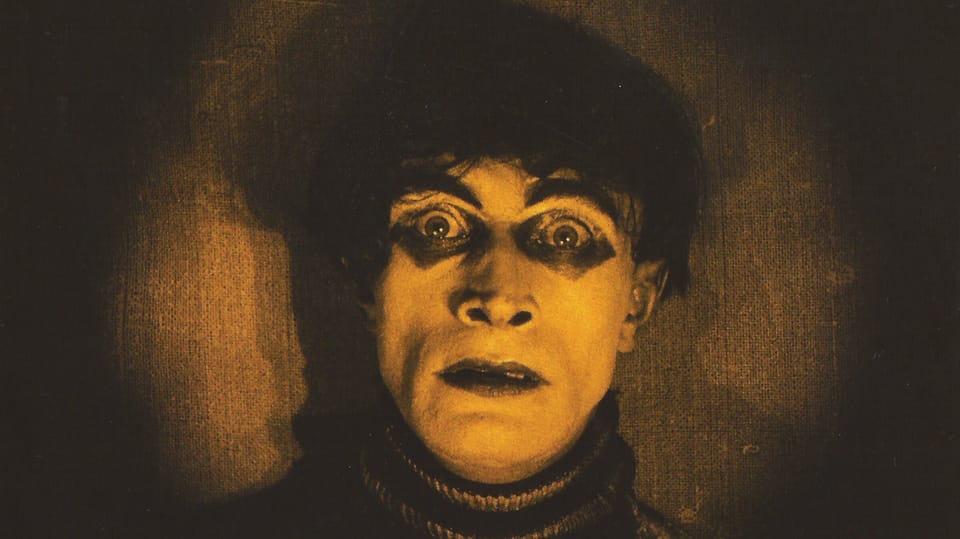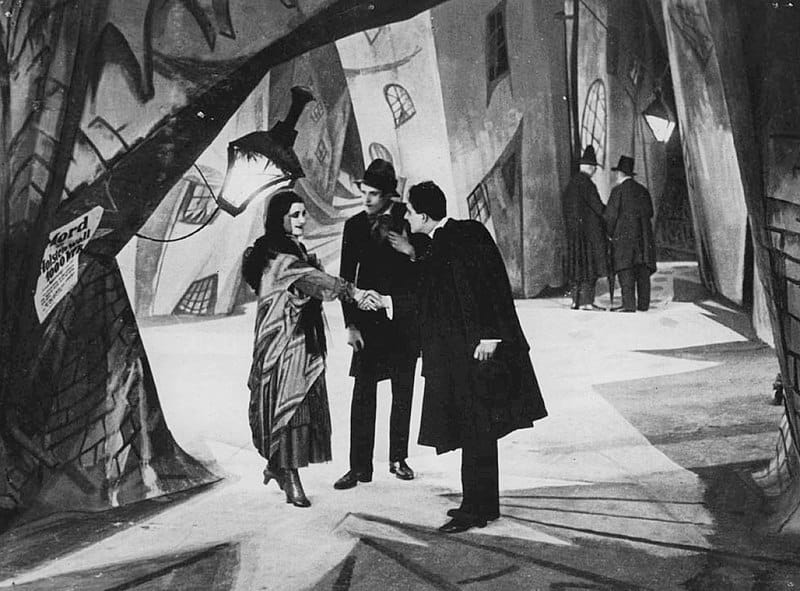Literary firsts: The Cabinet of Dr. Caligari

We're taking a bit of an unusual turn for a writing blog this month by talking about a silent film. It is, however, a very highly influential film that has left its mark on the visual iconography of entire movements and genres. It's also super spooky, so perfect for late October!
Released in 1920, The Cabinet of Dr. Caligari can lay claim to several firsts: the start of German Expressionism in film, the first horror movie, the first psychological thriller. There is some debate over whether it's definitively the first of any of these, but it was certainly one of the forerunners in all of these categories (and more). It combines burgeoning film techniques and conventions with stagelike sets that warp and tilt in an uneasy way. It delves into the darker side of psychology as it was understood at the time. Oh, and it has a pretty shocking plot twist, too—eat your heart out, M Night Shyamalan.

The bulk of the film centres around the investigation of a young man, Francis, into a series of murders that includes that of a close friend of his. What the audience quickly learns is that the murders are the work of Dr Caligari, who has brought his sonambulist sideshow to town. More accurately, the murders are committed by Cesare, the sonambulist whom Caligari keeps sleeping in a coffin-like "cabinet"(when he isn't on show or off killing people). As the investigation progresses, Francis puts not only himself in danger, but also his fiancée, Jane. And then, things take a turn for the unexpected... and then for the really unexpected, which I shall keep mum about so that you have to go watch the film.
One of the most striking elements of The Cabinet of Dr. Caligari is the visual aesthetic. As a silent film, it cannot rely on sound to set the tone in the same way that a modern horror can. Instead, we get:
- surreal, sharply angular and unproportional sets that feel dizzying and hostile, creating a visual distortion that echoes the psychological undercurrents of the story.
- very intense chiaroscuro (contrast of light and shadow) that exaggerates certain features of the actors and their environment—a key feature of German Expressionism which is particularly potent in black and white cinema.
- key close-up shots at important moments contrasted with the more standard (for the time) wide shots, which interrupt the visual flow and add a bit of shock factor.
- exaggerated costuming and makeup, especially for Caligari and Cesare, to make the characters' appearance more grotesque and call attention to their eyes.
This film was released so early in the history of moviemaking that there wasn't much of an established "language" of filmic conventions that it could lean on, either; rather, it was part of the creation of those conventions. The techniques used in its cinematography, sets, costuming, and lighting all work together to produce the necessary effects of suspense, discombobulation, and shock, much as we can see in subsequent films such as M, Nosferatu, the early monster movies Universal Pictures made in the 1930s, the entire genre of noir, and many others.
Even for those of us who communicate purely with words, the power of imagery is extremely important in being able to communicate emotions and subtext. Films, especially films like The Cabinet of Dr. Caligari that rely so heavily on visual techniques, can teach us a lot about how to build up an effective tone. And if there's suspense involved, even better!
Member discussion